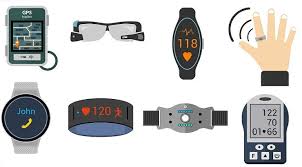Drug discovery has always been a long, expensive, and high-risk process. Traditional methods—relying on laboratory testing, trial-and-error approaches, and years of clinical trials—often take more than a decade and billions of dollars before a single drug reaches the market. But in 2025, quantum computing is transforming this timeline. By leveraging revolutionary quantum algorithms, researchers can now simulate complex molecules, predict drug interactions, and optimize compounds at speeds unimaginable with classical computers.
This shift is not just theoretical—it’s already reshaping the pharmaceutical industry.
Understanding the Challenge in Drug Discovery

Drug discovery involves several complex stages:
- Identifying targets – Finding the biological component (such as a protein) associated with a disease.
- Designing molecules – Creating potential compounds that can interact with the target.
- Testing & validation – Running laboratory experiments and clinical trials to verify safety and effectiveness.
The bottleneck often lies in the computational limits of classical computers. Simulating molecular structures at the quantum level requires immense processing power. Traditional computers simplify these calculations, but this can lead to missed opportunities and suboptimal drug candidates.
Why Quantum Computing Is a Game-Changer
Quantum computers operate on qubits, which can exist in multiple states at once thanks to superposition and entanglement. This allows them to:
- Model complex molecules without simplification.
- Run parallel calculations at unprecedented speeds.
- Optimize chemical structures in real-time.
In drug discovery, these capabilities mean researchers can evaluate millions of potential compounds in hours rather than years.
How Quantum Algorithms Help
The true magic lies in quantum algorithms designed for chemistry and biology. Some of the most impactful include:
- Variational Quantum Eigensolver (VQE) – Calculates the lowest energy state of a molecule, helping predict stability and binding efficiency.
- Quantum Approximate Optimization Algorithm (QAOA) – Optimizes molecular configurations for maximum effectiveness.
- Quantum Machine Learning (QML) – Combines quantum speed with AI’s predictive power to forecast drug efficacy.
These algorithms don’t replace lab work—they drastically shorten the pre-lab computational stage, allowing researchers to focus on the most promising candidates.
Case Studies: Quantum Computing in Drug Discovery
1. Roche & Cambridge Quantum
Pharmaceutical giant Roche partnered with Cambridge Quantum Computing to develop algorithms for molecular simulation. Their quantum models allowed them to test antiviral compounds for infectious diseases, reducing early-stage computational work by over 50%.
2. Biogen & 1QBit
Biogen, in collaboration with Canadian quantum software company 1QBit, used quantum-inspired algorithms to search for drugs treating neurodegenerative diseases like Alzheimer’s. The approach identified potential compounds months faster than classical screening methods.
3. Google & Boehringer Ingelheim
Google Quantum AI partnered with Boehringer Ingelheim to apply quantum simulation to pharmaceutical R&D. The focus was on understanding biological targets for complex diseases where classical computation often fails.
Consumer Impact: Faster, Safer, and Cheaper Drugs
Quantum-driven drug discovery has the potential to directly benefit consumers in several ways:
- Faster Treatments
- Shorter R&D timelines mean patients can access life-saving drugs sooner.
- Speed is especially critical for pandemics or emerging health threats.
- Lower Costs
- Reducing wasted research lowers development expenses, potentially making drugs more affordable.
- More Personalized Medicine
- Quantum computing can help design customized therapies based on an individual’s genetic profile.
- Improved Safety
- Advanced simulations predict side effects earlier, reducing failed trials and unsafe medications.
Challenges in Quantum-Driven Drug Discovery
While the potential is enormous, there are hurdles to overcome:
- Hardware Limitations – Current quantum computers are still prone to errors and require extreme conditions (near absolute zero temperatures).
- Talent Gap – Few experts are skilled in both quantum physics and pharmaceutical science.
- Integration Issues – Merging quantum results into existing drug pipelines requires significant adaptation.
- Cost – Access to powerful quantum systems remains expensive.
However, with heavy investments from tech giants and governments, these challenges are shrinking.
The Road Ahead: 2025 and Beyond
The year 2025 marks a turning point—hybrid computing models (combining quantum and classical systems) are becoming standard in pharmaceutical R&D. Instead of replacing classical systems entirely, quantum computers act as specialized accelerators for the most complex tasks.
In the next five years, we can expect:
- More quantum cloud platforms accessible to researchers worldwide.
- Fully AI-integrated quantum drug discovery pipelines.
- Dramatic increases in precision medicine availability.
The ultimate vision? A future where discovering a new life-saving drug takes months instead of decades.
Final Thoughts
Quantum algorithms are not just a theoretical curiosity—they are the next big leap in pharmaceutical innovation. By compressing years of research into weeks and making unprecedented molecular predictions, quantum computing is turning the dream of rapid, affordable, and safe drug discovery into a reality.
The companies investing in this technology today are not just preparing for the future—they are building it. And for patients worldwide, that future could mean faster cures, fewer side effects, and more hope than ever before.





